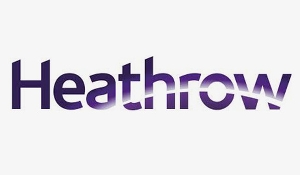UK Consortium Building Blueprint for UK Wide Zero Emission Aviation Network
| Company | London Heathrow Airport |
|---|---|
| Date | 09.12.2021 |

- Project NAPKIN (New Aviation Propulsion Knowledge and Innovation Network) expects zero carbon emission flights (ZEF) to begin in the UK in 2025 for short routes between the UK mainland and island destinations.
- ZEF can be scaled up to connect other regions of the UK by 2030 and the Consortium, led by Heathrow, believes a zero-carbon emission flight network is possible in the UK by 2040.
- Hydrogen fuelled 19 seat and 48 seat aircraft can viably operate on ‘lifeline routes’ such as from Highlands & Islands Airports mid-decade and on regional routes, including between London City and Dundee Airports around 2030.
- The next phase of the research will investigate the viability and carbon impact of 100 seat ZEF services on core UK trunk routes like Heathrow to Edinburgh and will include ‘clean sheet’ future aircraft concepts
- The consortium will present its full findings in April 2022
A UK aviation consortium featuring representatives from airports, manufacturers and academic institutions have today released their interim findings on the viability of achieving zero emission flight in the UK.
Over the past year, Project NAPKIN, which is funded through the UK Government Innovate UK Future Flight Challenge, has been evaluating each part of the future aviation system from future aircraft and their performance, infrastructure at airports, viable economic models, and passenger attitudes.
Central to the project has been analysis of three aircraft, a 9 seat Britten-Norman Islander, a 19 seat DHC-6 Twin Otter and a reconfigured 48 seat ATR 72-600. The consortium believes that it would be possible for all three aircraft to be hydrogen retrofitted and that the current airfield and in-flight performance of the aircraft would be largely unaffected.
This has the potential, in the case of the Britten-Norman Islander and DHC-6, for both aircraft to operate on lifeline routes such as between the Scottish mainland and islands by the mid-point of this decade.
More widespread regional connectivity across the UK is achievable with an ATR 72-600 equivalent, around 2030. The consortium believes, in a 48-seat configuration, it could operate on nearly all current domestic routes. Furthermore, with the appropriate infrastructure in place at UK airports, all three aircraft could provide jet zero services on routes that are currently unserved, further enhancing regional connectivity and supporting future business models of smaller airports across the country.
From an airport infrastructure perspective, using London City’s 2019 domestic schedule as a baseline, the consortium believes a zero-emission network could be integrated into the airport’s operations, subject to appropriate storage investments and ensuring sufficient supply, and sustainable delivery of, hydrogen.
Challenges remain, which the consortium will look to engage with, particularly relating to cost as the overall industry recovers from COVID-19, and achieving meaningful scaleability across the country. Additionally, as the UK Government considers its future Hydrogen strategy, it will have to evaluate how production and delivery can be scaled to meet anticipated future demand from aviation.
However, the consortium are confident that their findings can help develop a comprehensive baseline from which all future zero emission aviation planning can be developed from. The final report will include analysis of a small narrowbody aircraft, passenger attitudes, noise performance and insight into how the aircraft could be adopted by airlines, will be published in April 2022.
Commenting on the interim report:
Jenny Kavanagh, Chief Strategy Officer at Cranfield Aerospace Solutions said:
“This interim report shows the emergence of zero carbon emissions flight (ZEF) on a small scale by the mid-2020s and, vitally, sets this revolutionary change in context – that achieving ZEF at the sub-regional level is just the beginning; that not only will this first step enable the scale up of technology and operations to fully-fledged ZEF regional flight in the coming decade, but that in itself, it represents an opportunity to develop a new, thriving, inter-connected system of green air services operating from small airfields to complement the existing road and rail networks.”
Liam McKay, Director of Corporate Affairs at London City Airport said:
“The work so far helps demonstrate that zero emission flight across the UK is possible. And for airports of all sizes, as we consider how we can facilitate this change, project NAPKIN provides us with insight that we can engage stakeholders with and consider from both strategic planning and capital expenditure perspectives.”
Max Brown, VP Technology at GKN Aerospace said:
“The reports initial findings highlight the opportunity the industry has in understanding and addressing some of the key challenges facing a zero emission solution, as well the importance of continued partnering and sharing outside of our typical collaborative model. The route to a zero emission technological solution is clearly visible and GKN Aerospace is excited to be a part of the NAPKIN project”
And looking ahead to the final report Matt Prescott, NAPKIN Project Leader and Head of Carbon Strategy at Heathrow Airport said:
“As project NAPKIN progresses it becomes increasingly clear that we are on the cusp of a revolution that will ultimately affect airports of all sizes. The final phase of work aims to reveal the pace and depth of the changes required in the aviation system and airport infrastructure to grasp the climate and UK economic opportunity of new fuels and technologies.

